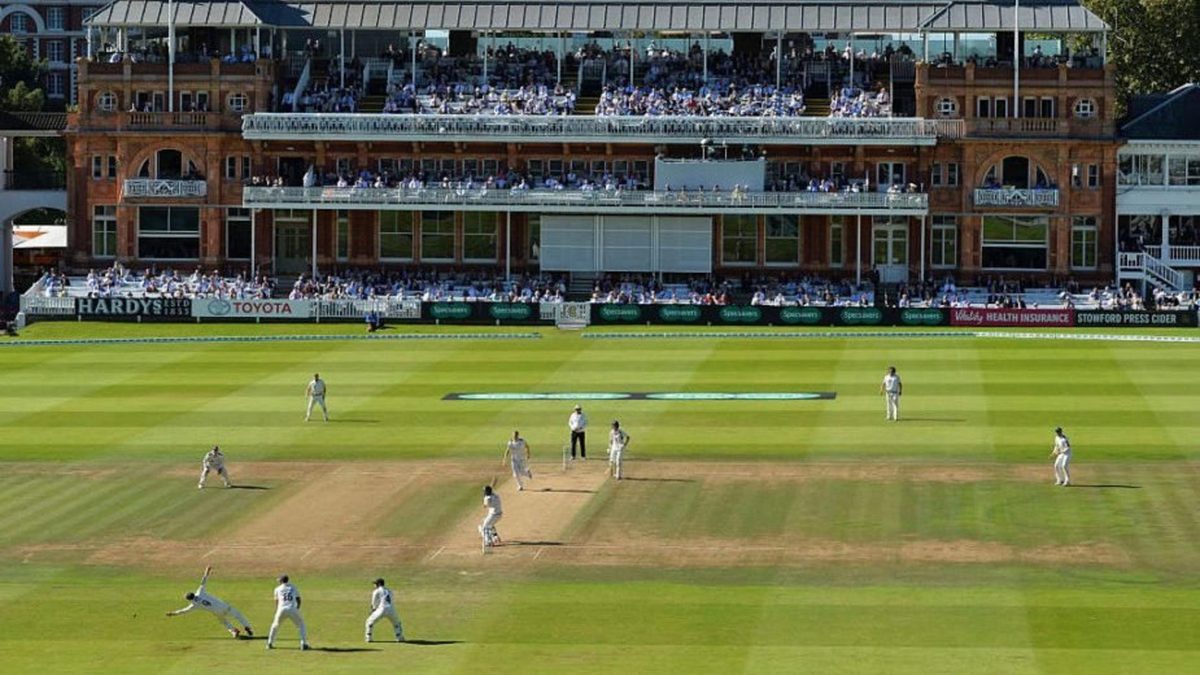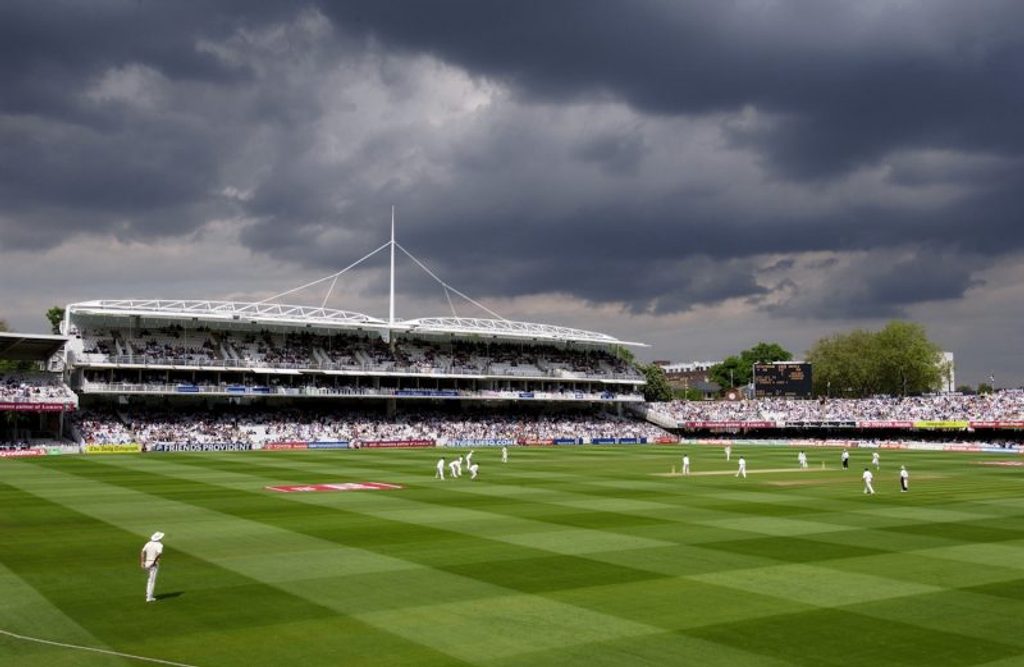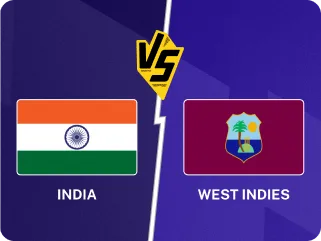
In issue 20 of The Nightwatchman, Tim Cooke undertakes an urban pilgrimage through the streets of London.
This article appears in issue 20 of The Nightwatchman. Available in print and digital editions.
The Nightwatchman is Wisden’s quarterly. Combining brilliant writing and beautiful design, it is the perfect gift for cricket fans. Take a look at our products and subscription options and for a limited period get 10% off by entering the coupon code NY10 at the checkout*.
*Offer excludes postage and packaging and rolling subscriptions.
When I think now of what I love about cricket, I inevitably hark back to England’s inglorious 1990s, the period of transition that followed and the sudden ecstasy of the mid-noughties. In the years since, the game has changed almost beyond recognition – as have I – and it has become a struggle to muster the enthusiasm that once coursed through my veins.
As a child, cricket meant the world – club cricket, school cricket, county cricket, French cricket, cricket on TV, cricket computer games: any cricket. Live cricket was a particular treat, and I recall clearly my first trip from industrial south Wales to London to see the national team in action.
It was 2000 and we had tickets for the third day of the second Test between England and West Indies. We caught the three-hour train to Paddington, hailed a black cab and arrived at Lord’s in plenty of time.
My brother and I raced between the brick arches beneath the Mound Stand, weaving in and out of the growing crowds. We bought bacon sandwiches and cans of Coke and stocked up on miniature autograph bats, which we would take home and decorate in the colours of Gray-Nicolls and Slazenger, putting them to good use in our basement one-knee cricket league. We watched from crisp white seats as a young Michael Vaughan struck a decent 41, an ageing Curtly Ambrose and Courtney Walsh gave it their best, and Dominic Cork – the flavour of the month for me at the time – elevated the game above the ordinary.
[/breakout
I was 13 years old and my mind was racing with fantasies of what the future might hold for English cricket. I sat in silence in the cab on the return journey, apparently immersed in the pages of the match programme but dreaming instead of the long walk out onto that famous square.
A few weeks ago, I saw a feature on the BBC homepage enabling readers to select their starting XI for the coming tour of Australia. I realised that I had no idea who to pick and in what order because I knew so little about the players. My waning interest had hit a nadir. This revelation did not sit easily with me. Should I just roll over and consign my childhood passion to history, and along with it perhaps the very essence of childhood itself? I thought back to that day at Lord’s and the overwhelming happiness I felt. I decided to take action: I would walk from my home in Hackney to the home of English cricket – a pilgrimage of sorts, just seven miles, in the dead of night.
Walking has become a fascination of mine, as has the literature it inspires. There is no better condition for contemplation than being on the move, exploring a familiar or new environment with eyes peeled and nerves pricked. For centuries, writers have sought material on the road – Matthew Beaumont, in his book Nightwalking: A Nocturnal History of London, explains that for the Romantic poets walking “assumed the form of an intellectual, political, even spiritual vocation”.
Charles Dickens would take a kind of mad walk through the gas-lit capital when stuck for ideas or sleep, while Thomas De Quincey spent opium-fuelled Saturday nights trekking “without much regarding the direction or the distance, to all the markets, and other parts of London”. So many more have continued in this vein – the Beats, the Situationists, psychogeographers, new nature writers and countless others in between. This journey of mine would be a way of examining my childhood relationship with cricket, of delving into memory and reconnecting, and perhaps of coming to terms with a very significant loss.
 Mark Ramprakash is bowled by Shane Warne in Perth, 1995
Mark Ramprakash is bowled by Shane Warne in Perth, 1995
I wake at four and dress in yesterday’s clothes. Storm Brian hardly touched down in London but the winds have shaken a flood of autumn leaves from the trees, creating a dreamy pink and brown glow in the lamplight. I stride out onto the pavement and immediately see a fox, thin and mangy, crossing the road in the distance. He pauses and throws a glance my way before trotting out of sight.
I turn onto Well Street, a usually bustling thoroughfare with a market on Saturday, but now melancholic in the silence and darkness. A ball of litter blows up against the foot of the butcher’s facade and rustles quietly in the breeze. I have thought a lot about melancholy recently, having visited an exhibition about the writer WG Sebald at Somerset House, from which I took away the notion that there can be great hope in sadness or disappointment – if we long for change and then strive for solutions. I wonder if I could apply this to cricket.
The 1990s were a melancholic time for England supporters. But, despite relentless thrashings at the hands of Australia, the game was a national obsession – well-attended Test matches, front-page news, underperforming and tormented stars scorned and strung out in the stocks for all to see, Shakespearean drama at every turn. It was rough and ragged and beautiful. We even loved our adversaries. Essentially, there was always the hope of something better, of the arrival of a new and glorious era.
I find it difficult to summon such optimism today, regardless of recent triumphs. Much of cricket’s make-up has changed. The diminishing concept of the team, the shift of emphasis away from the Test format (I hate Twenty20), the game’s over-professionalisation to the point of sterility, the move from terrestrial to Sky (from public to private), the decline of clubs in school and urban areas.
I divert through Frampton Park Estate and catch a strong waft of bonfire, or perhaps it’s more like smoked fish. I pause on Mare Street and observe faint wisps of cloud drifting across a black sky specked with stars I have to squint to see. Another fox darts behind a parked car. I branch onto Richmond Road and pass London Fields on my left, where I played for a brief spell when I first arrived in this city six years ago. The wind is picking up – it blows cold gusts into my face and throws the crowns of trees in lunges away from the spotlights that flank the park. I turn onto a residential street and hear only my footsteps. A high-rise block looms monstrously behind the pub at the far end, a single window at the centre of the top row of flats lit like a beacon.
Of course, my disinterest cannot be put entirely down to cricket; I must take some responsibility. I have changed wholly over the last decade and other interests have taken precedent. During my teenage years, I threw myself into music and friends, rebelling against the structured days that could accommodate sport. Literature soon came to the fore, as did film, photography, studies, my girlfriend, and later our daughter – our life together. For a while, maturing felt to me like a dilution of ambition, a shift from dream to reality. But I’ve decided that the intensity of my feelings – and my hopes for the future – never really changed. Those feelings simply took on new form as I found my footing in the adult world.
Perhaps cricket is, in my case, so consumed in the fantastical pleasures of childhood that it’s become an inevitable casualty of growing up; it could never exist outside of the cocooned idealism I left behind. I’ll find any reason to clatter today’s game in comparison to the one I loved so much when I was young. Maybe this is a way of preserving my former self and a period of time that I’m not fully prepared to let go. I believe they call this Golden Age Syndrome.
A young woman approaches from the opposite direction – the first pedestrian I’ve seen. She has short black hair and is wearing a long green coat. She is giving nothing away as to where she has come from or where she is going. A motorbike screams past and the driver pulls a wheelie on the empty road, the stench of diesel rising in his wake. Half a mile on, I pass a punk with tattoos crawling up his neck and notice the blue and white sign of a Leyland hardware store, which calls to mind Alfred Watkins and the concept of ley lines – is there a route from here straight back to the Lord’s of my youth? I take out my camera and shoot an image of the distant city’s towering iridescence. A car pulls by and I see that both driver and passenger are sucking balloons.
Opposite Highbury & Islington station there’s a terrible portrait of Sean Connery in a charity shop window. Sirens are constant. The noise reminds me of an image I once saw of children playing cricket during the Blitz. The wicketkeeper’s arms are raised towards the sky in joyous appeal; a leg slip is doing the same, while the batsman glances back with a forlorn expression. They’re wearing grey jumpers and charcoal shorts. Behind them, bombs have gutted two houses. It occurs to me that I have not once, in six years, seen children playing cricket on the streets of London, a sight that so defined my summers in south Wales. As well as everything else, I must remember that my geography has changed, too.
I saunter along Westbourne Road, through another estate – discernable by its colourful mural dedicated to nursery rhymes – and pass a dog walker, in tight red shorts, wading through a cloud of vapour pouring from an orange flue pipe – someone is showering. The dog walker hoicks and spits onto the pavement. My GPS then leads me to a strange door in an old brick wall, behind which is a large derelict building. I am reminded of an HG Wells short story in which a politician tells of having pushed through a ghostly threshold on the streets of Kensington to find an ecstatic, magical garden.
I move on into a maze of flats, weaving through lanes and alleyways, and become suddenly nervous. Through an open window, I can hear console games and young voices, accompanied by the thick stink of skunk. I wind up among garages and opt to backtrack to the safety of the main road.
I am filtered through a small industrial estate, bearings totally shot, and watch a blackbird peck at the floor. I hear the soft sound of dry autumn leaves cartwheeling over concrete. A Peugeot 106, almost identical to the car I had when I was 18, rolls by. Its number plate is only two off from the one I once owned and the black skirting is missing on the same side. In the dark corners and crannies, I spot figures and faces, catching snapshots of ghosts as I walk. The next road collapses in on itself and the BT Tower flares in the distance.
Suddenly the sky is tinged with blue and I emerge from the unknown topography onto Camden High Street. A road-sweeping truck disturbs two pigeons, scattering them in sublime style. I come upon another Leyland store and note that I must look up their locations on a map. The ground by Camden Town station is a sea of trash washed up on the pavement. The smell of recently discarded fast food is unbearable and I retch. Homeless people sleep in doorways. I think of nights out, violence and Ben Stokes.
 Rain threatens the 1st test at Lords between England and New Zealand
Rain threatens the 1st test at Lords between England and New Zealand
Seagulls cry from above – 20 or 30 of them, so evocative of home – and I am soon rounding the bend by London Zoo. I have never been here before. I merge onto the canal path as the sun rises fully, casting vivid reflections of the rows of trees that line the water. The weeping willows and bickering birdlife create the sense of true urban wilderness. I pass the most bizarre aviary I have ever seen, a science-fiction art installation packed full of birds I can’t name. I rejoin the road and am confronted by an army of joggers, sparkling facades and a London I do not recognise – sanitary and lifeless.
Since that first trip, I have been to Lord’s many times. I watched England take on Australia a year or two ago and got so drunk I can hardly remember leaving. I also once took a group of inner-city school kids to watch Middlesex – I was running a cricket club at a west London secondary at the time. The place I visited on these occasions never felt in any way similar to the one set in my mind years before
I skirt the outer limits of the idyllic St John’s Wood church gardens and soon arrive at the stadium’s front gate. There is a gentle, rose-coloured glow overhead and plane after plane cuts white lines into the sky. A flock of starlings suddenly rises, bulging and shape-shifting, and disappears to the west. Behind the ground is a row of tower blocks and a crane arching into the ether. I sit on the cold floor as people begin to arrive for work.
I have thought far less about cricket than was my intention. I contemplate the sign: “Lord’s – where history is made.” My gaze lingers for a moment on the word “history”, and I hail a cab.








